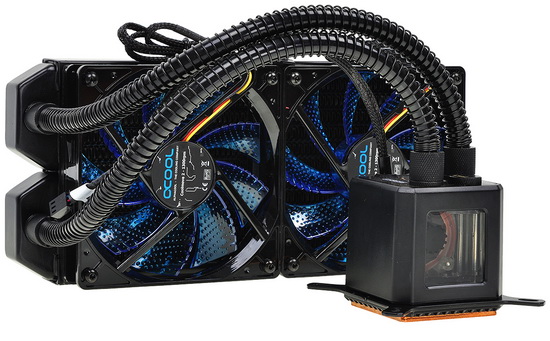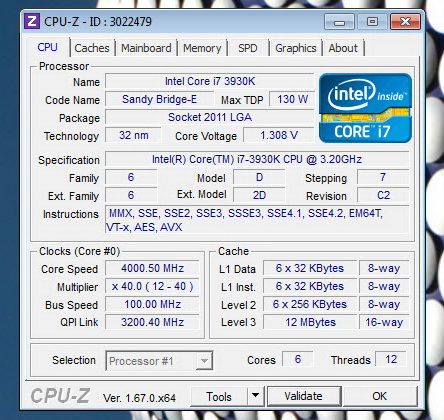INTRODUCTION

Whenever i get a few free minutes between reviews i always like to visit forums and Reddit to read the hottest topics and although lately the usual AMD vs NVIDIA flame (all over again this time because of the new Radeon Fury and GeForce 980 Ti cards) leads the pack once again there are many people out there who wonder which is the best solution for their systems, AIO liquid CPU coolers or CPU Air Coolers. The answer has much to do with what kind of case/tower you own and the amount of airflow inside but generally AIO liquid CPU coolers are easier to "optimize" compared to regular CPU air coolers since they can be configured to suck air from the outside and thus provide even better cooling results. One such solution is in our test bench today and more specifically the first complete 240mm AIO liquid CPU cooler by Alphacool called the Eisberg.
Alphacool are based in Germany and are one of the biggest producers of watercooling components for the PC market. Their products are sold worldwide which is testament to the quality of products they sell and are renowned for being very high performing.
Typically just like with all other AIO liquid CPU coolers in the market the same basic configuration is used in the Eisberg 240 which is a radiator connected to a pump/waterblock combo via two long tubes. In this case Alphacool has used a 278mm long radiator made out of copper and brass, two rubber tubes, high speed (3600RPM) pump, copper waterblock and two low-speed (1300RPM) Coolmove 2 120mm hydro dynamic bearing fans. The Eisberg 240 however is unique compared to other AIO liquid CPU coolers not only because you can swap the tubes for your very own but also because that allows you to add more radiators in the loop. Of course the small (yet quite fast) pump may not be sufficient for very complicated and long loops but adding a GPU waterblock into the mix or even a 2nd radiator (perhaps even both) shouldn't be a problem. The downside however with that is that the loop is not closed/sealed and thus it requires filling it up with liquid just like a custom water cooling kit.
SPECIFICATIONS AND FEATURES

PACKAGING AND CONTENTS
We received the Eisberg 240 inside a plain cardboard box with just 3 stickers at the top.
Packaging is somewhat standard for this kind of devices so nothing new here.
The Eisberg 240 has one of the richest bundles we've ever encountered with such a device so aside the main unit you're also getting two Coolmove 2 120mm fans, 2 rubber fan mounts, 16 fan radiator mounting screws, Y-splitter fan cable (12/5V), fan extension cable (7V), thermal paste tube, installation instructions (although Alphacool states that these are not available in the box but rather just online) and all the required bits and pieces for Intel LGA 1150/1155/1156/1366/2011 and AMD AM2/AM2+/AM3/AM3+/FM1 compatible mainboards.
THE EISBERG 240
At first glance i have to admit that the pump/waterblock combo steals the show since it seems to be the largest one we've ever seen used with one such solution (to date at least).
30mm thick radiators are typical for AIO solutions (some use even thinner ones however) but still are no match for some of the largest ones used with custom watercooling kits.
The good news is that quality is very good and both the fins and channels are made out of copper.
Both tubes feature metal covers for increased durability.
The company logo is placed at the top of the medium-sized pump and here you can also see the fittings used for the tubes (which you can swap with others). This particular pump can push up to 120 liters of water per hour and has a MTBF of 50.000 hours.
I don't know if the loop is completely closed right from the factory or if you will need to add more liquid after a few months but tanks to this large opening beneath this screw it should be easy.
There's a clear plastic section at one of the sides but unfortunately Alphacool didn't use a LED to improve this "eye-catching" feature.
The waterblock is made out of copper.
Both Coolmove 2 120mm fans can reach speeds up to 1300RPM to produce airflow levels of up to 58.6CFM with just 23dBA of noise and feature rubber anti-vibration mounts.
Prior to installing the pump you will need to mount the appropriate bracket as seen above.
You can mount the fans either on the side of the pump in order to push air outwards or on the upper side and have them suck air from the exterior (since Alphacool recommends the 2nd we used both configurations for this review).
TEST BED


TESTING METHODOLOGY
We always take things quite seriously when it comes to work so just like with the previous LGA1366 database we will not be testing each CPU Cooler on its own and with different ambient temperature levels and thus we can actually have yet another valid CPU Cooler database. Testing a CPU Cooler automatically means that you need to know where it stands against the immediate competition and to accomplish that we have spent both money and time through the years, something that we plan to continue to do so in order to get the most accurate results for the end consumers who read these lines. Every CPU cooler in this database is tested with the bundled 140mm/120mm/92mm/80mm fans while working at both idle speed and 100% of their speeds for all the temperature tests. CPU Coolers that do not come bundled with a fan/s are measured using a Noctua fan (size dependent on the model) to test for the temperature tests but due to the lack of a stock fan dBA level tests are obviously skipped. Single (120/140mm) watercooling solutions are tested with the radiator mounted at the rear of our test rig while dual/triple/quad (240/260/280/360/420/480/560mm) solutions with the radiator mounted at the top. For the dBA tests every cooler in the database was measured both while on idle mode or with the fan controller in the minimum setting and while on extreme load or with the fan controller all the way to the highest possible setting (PWM fans do that on their own without our intervention). Every single test takes place in a temperature controlled room of 23 degrees Celsius Ambient Temp with the help of two AC units placed diagonally inside the room. The Arctic Silver 5 thermal paste is used with every CPU Cooler in our latest LGA2011 database (although initially this was not the plan we had to change things to get the most accurate results). Finally it's very important to point out that just because a CPU Cooler is better than another when tested with our test rig that does not necessarily mean that the same performance differences will apply 100% for other CPU models and in other situations (such as different ambient temps and system configurations).
To successfully record the load temperatures we use the latest OCCT application for around 6-10 minutes to push the processor to its limits and after that is done and the temperatures are recorded we wait for about 10-20 minutes for the CPU to cool down and record the idle temperatures. This is done to allow time for the thermal conductive material to achieve the optimal performance level. Same procedure is then repeated with the Passmark BurnIn Test as a failsafe just in case the OCCT results are wrong. This procedure takes a lot more time than the usual peltier/thermometer tests but this way not only can we deliver real world results to our readers based on real CPUs but we can also triple check the results using a variety of programs. Last but not least the temperatures were recorded using both the latest versions of AIDA64 and RealTemp while the noise level tests are performed using a high precision ExTech HD600 Decibel Meter placed about 10-15cm above the CPU Cooler. Still although the same testing procedure applies to all units do take into consideration that unlike the official numbers which are measured in special noise isolated labs with just the fans here we also have both the rest of the cooler and the rest of the system (although all system fans are turned off when recording noise levels).
TEST RESULTS


CONCLUSION

Up until today Asetek, CoolIT and AVC were the 3 top AIO liquid CPU cooler manufacturers (OEM) but it really seems that i missed the memo since Alphacool has actually been making such models for quite some time now (and rebranding them for other companies). The surprising part is that they've implemented things no one else has to date so the Eisberg line is actually the offspring of a regular AIO liquid CPU cooler and a custom watercooling kit since thanks to the available fittings you can use your own tubes to add extra hardware like a radiator, GPU waterblock and why not even a second pump. Since this was their first attempt however they didn't do everything right. For starters performance is very good for a 240mm AIO liquid CPU cooler paired with two low-speed fans but it could be much better with faster fans. Now i do realize that Alphacool wanted a low-noise result and in the end you can always use your very own fans still two high-speed fans together with a speed controller would be the best possible scenario for all users. Also the high-RPM pump is a very good addition and should be able to hold its own even if you do add a 2nd radiator but since it's very efficient it's not completely silent (this however doesn't matter much unless you have the tower right next to your ears).
Alphacool products are not widely available mainly because as mentioned already they rebrand their products for other companies. Still as we speak the Eisberg 240 can be found inside the EU for a price tag of 87.99Euros (Aquatuning.de) and in case you're wondering we all feel that it's a great price for a great AIO liquid CPU cooler. True it may not perform like some other 240mm models because of the low-RPM silent fans but it doesn't fall much behind and again don't forget that it's much quieter and that it's basically a small watercooling kit. Overall we do feel that Alphacool could make an even better model but until that happens the Eisberg 240 performs very well and offers more than most similar solutions which is why it gets our Golden Award.
 PROS
PROS
- Very Good Build Quality
- Very Good Cooling Efficiency
- Removable Tubes (Can Add Extra Radiators, GPU blocks, Pumps)
- Silent
- High-RPM Pump
- Rubber Tubes With Metal Spring
- Price (For Some)
CONS
- Low-RPM Fans (For Some)
- Slightly Noisy Pump
- General Availability

 O-Sense
O-Sense





















.png)

